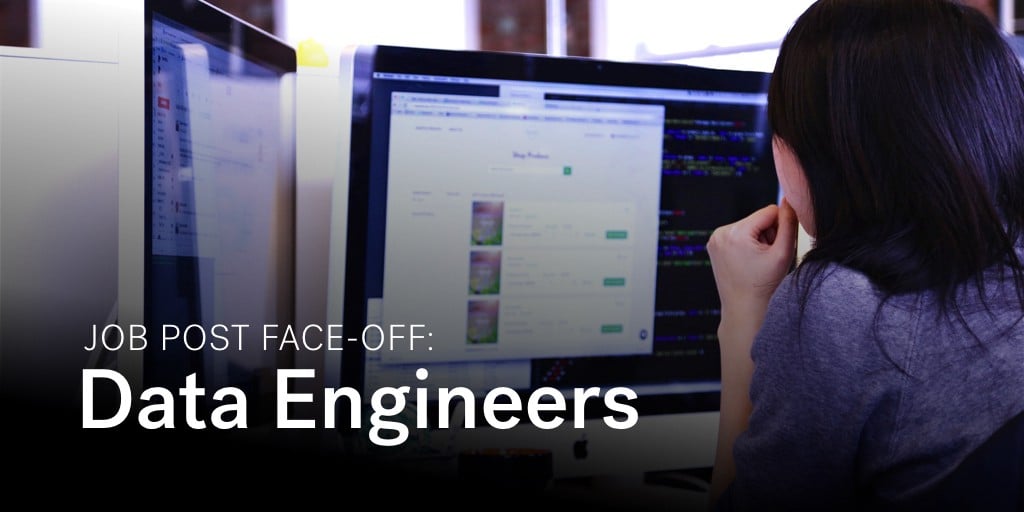Pinterest vs. Twilio: job ad face-off

Pinterest made news earlier this week for promoting an internal candidate to CTO “to address growing engineering needs” according to VentureBeat. Addressing growing engineering needs means competing for talent against every other tech company that just can’t seem to hire engineers and data scientists fast enough, especially in the San Francisco Bay Area. Also competing for that talent, just a few blocks away from Pinterest HQ, is last year’s tech IPO darling: Twilio.
According to their careers site, Twilio is currently on the hunt for 28 new hires in engineering, while Pinterest has 42 engineering roles open. You can imagine that many of the same engineers are applying to both companies. A lot goes into the hiring process, but job descriptions are the very front lines: the data clearly shows that how you write your job posting can make or break a candidate’s decision to apply. And you can’t hire someone who doesn’t apply.
So in a job-seekers market, can we predict whether Pinterest or Twilio is going to win more of the best-qualified talent? Let’s take a look at what the hiring data tells us about a couple current job posts found on their web sites:
- Twilio: Principal Software Engineer — Big Data
- Pinterest: Data Engineer

I put both of these job listings into Textio to see how they score, and then grabbed the above screenshots from the Textio editor to show why. The Textio Score (as explained here by our resident expert Allie Hall) is a short-hand metric for “how many qualified candidates will apply for this job and how fast will it fill, compared to my competition?” The list of reasons shown below the score tells you exactly what areas need improvement in order to attract more and better people to apply.
Talent at Twilio
In this case, Twilio’s score of 93 (out of 100) predicts super-successful recruiting results: this job listing will perform better than 93% of similar ads. The Pinterest job post, however, is just on the 50-yard-line.
Even though the Twilio job description has a few corporate cliches, it’s getting most everything else right:
- With a word count of 548, it’s right in the current sweet spot of 300–750 words for the best length
- The ratio of active to passive language is very high
- It doesn’t use too many adjectives
- It uses a strongly crafted equal opportunity statement, which has been shown to attract a wider range of applicants from all demographic groups:

Moreover, Twilio has managed to score a perfectly neutral tone of voice when it comes to the use of gendered language. As you can see from the dark hashmark in the two screenshots above, the average gender tone of engineering job descriptions skews heavily masculine.
Patterns for Pinterest
Pinterest’s job posting for a Data Engineering role, on the other hand, has a number of phrases that statistically will result in more men applying than women. Words like “proven” and “expert” are good examples of fixed-mindset language that research shows will not only lower the number of women who apply, but will also slow down your time to fill.

The Pinterest job ad does well at avoiding corporate jargon and using active language, but phrase repetition like in the gray highlights shown above make potential candidates more likely to stop reading and move on. Another problem that Textio sees here is there are too many “we” statements compared to “you” statements. In addition to helping fix the problem of being too short in word count, adding some more descriptive “you” language would help improve the rate of candidate engagement with this listing.
Checking out these companies in the Textio Index, we can see that the respective scores on these two posts are fairly typical for each. Pinterest’s Textio Score for publicly searchable job listings sits at 48, while Twilio is currently at 78.
Twilio ranked in the top 5 of the inaugural Textio 50 list published late last year, and from this current listing it sure looks like they are continuing to write job postings in a way that will attract more qualified candidates faster than their competition.